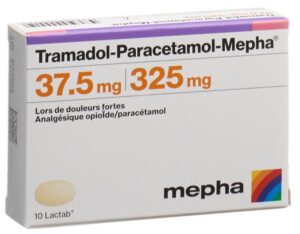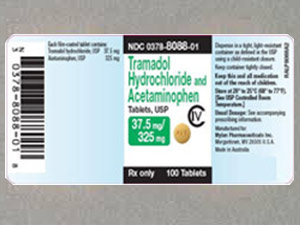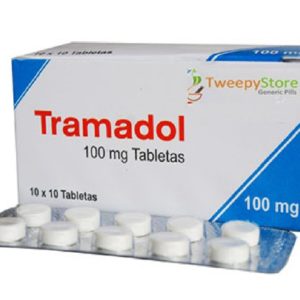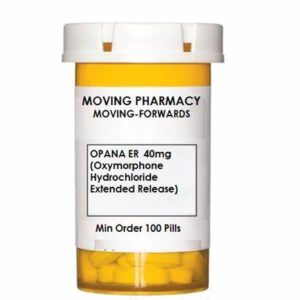Description
Tramadol for sale online with or without a prescription:
Looking for Tramadol for sale online? We offer authentic, FDA-approved Tramadol for fast and effective pain relief.
Tramadol is a reliable prescription medication for moderate to severe pain.
It works by changing the way the brain perceives pain.

If you suffer from chronic conditions or are recovering from surgery, Tramadol provides relief.
We deliver discreetly and securely, ensuring your privacy is protected.
You’ll enjoy competitive prices, fast shipping, and 24/7 customer service.
No long waits or lines at pharmacies. Many customers return for the convenience and reliability we offer.
Our Tramadol is sourced from licensed pharmacies, and we guarantee its high quality.
Whether you’re suffering from persistent pain or need short-term relief, you can place your order with confidence.
We accept multiple payment methods for your convenience.
Buy Tramadol online today and get fast relief with reliable service.
Explaining the purpose, benefits, risks, and safe use:
Many people currently suffer from moderate to severe pain and are actively seeking reliable pain relief options.
As a result, doctors are increasingly prescribing Tramadol 37.5/325mg to control pain that doesn’t respond to other treatments.
Furthermore, patients now buy Tramadol online for faster delivery, greater privacy, and easy access to this prescription medication.
Therefore, this article provides comprehensive information on the use, benefits, risks, and safety tips of Tramadol to help you make an informed decision.
What is Tramadol? (Tramado for sale near me)
First, tramadol acts as a synthetic opioid used to treat moderate to moderately severe pain.
More specifically, it binds to opioid receptors in the brain and spinal cord to reduce pain sensation.
Additionally, tramadol increases serotonin and norepinephrine levels by blocking their reuptake in the nervous system.
This dual mechanism, therefore, improves mood and reduces the brain’s perception of pain signals.
Tramadol is currently available in immediate-release tablets, extended-release pills, capsules, and injections for various pain disorders.
How Tramadol Works (Tramadol for sale online:
Most importantly, tramadol relieves pain through two main pathways in the central nervous system.
First, it binds to opioid receptors, slowing down how the brain processes pain messages.
Second, it prevents the reuptake of serotonin and norepinephrine, which help regulate pain and emotional response.
Together, these effects make tramadol unique among other pain relievers, with a unique mechanism of action.
When Doctors Prescribe Tramadol? (Buy tramadol for sale)
Doctors typically prescribe tramadol for patients with specific pain-related conditions.
For example, many patients take tramadol after surgery, such as dental work, orthopedic surgeries, or abdominal procedures.
People with arthritis, fibromyalgia, and chronic lower back pain also receive tramadol for long-term symptom relief.
Similarly, patients recovering from fractures, sprains, or serious injuries use Tramadol to manage acute pain in the short term.
Additionally, tramadol is helpful for nerve-related pain, such as diabetic neuropathy and sciatica.
How to Take Tramadol?
Patients generally take tramadol as directed by a doctor, depending on their condition and pain level.
For example, immediate-release tablets are taken every 4 to 6 hours at doses of 50 to 100 mg, as needed.
However, the total dose does not exceed 400 mg per day for safety and effectiveness reasons. Tramadol for sale
In contrast, extended-release formulations are taken once daily, usually starting with 100 mg and gradually increasing.
Despite this, doctors recommend a maximum of 300 mg of extended-release tramadol per day to reduce health risks.
What to Do if You Miss a Dose?
If a dose is missed, patients wait until the next scheduled dose without doubling the dose.
This practice helps prevent accidental overdoses and ensures consistent pain control.
Recognizing Common Side Effects:
Like many medications, tramadol causes side effects of varying severity and frequency.
Initially, some patients experience nausea or vomiting, especially at the beginning of treatment.
Dizziness and drowsiness are also common, so patients avoid driving or operating machinery.
Constipation also occurs because tramadol slows the digestive system, like other opioids.
Other side effects can include dry mouth, fatigue, and occasional headaches. Tramadol for sale
Know the Serious Risks:
However, tramadol also poses serious health risks that require medical attention and monitoring.
For starters, tramadol increases the risk of seizures, especially in people with epilepsy or a history of neurological disorders.
Additionally, combining tramadol with antidepressants or migraine medications can cause serotonin syndrome.
This potentially fatal condition is characterized by confusion, tremors, fever, and rapid heart rate.
In high doses or with alcohol, tramadol causes respiratory depression, making breathing slow or dangerously shallow.
Therefore, patients should avoid alcohol and sedatives while taking tramadol.
Who Should Avoid Tramadol?
Not everyone is a good candidate for tramadol, and some people need alternative treatments.
Specifically, people with a history of drug abuse should avoid tramadol due to the risk of addiction.
Similarly, patients with seizure disorders should not take tramadol unless closely monitored. Tramadol for sale
Pregnant or breastfeeding women should also avoid tramadol, as it crosses the placenta and passes into breast milk.
Older adults should also use lower doses because they are more sensitive to tramadol’s effects, including dizziness and sedation.
Avoiding Dependence and Tolerance:
Over time, tramadol causes tolerance, meaning higher doses are needed to relieve the same amount of pain.
At the same time, physical dependence develops when patients use tramadol for prolonged periods.
Abrupt discontinuation can lead to withdrawal symptoms such as sweating, chills, and irritability.
Therefore, doctors recommend gradually reducing the dose when stopping tramadol to avoid withdrawal symptoms.
Continuous monitoring helps patients use tramadol safely without developing addiction.
Who should avoid tramadol?
Not everyone is a good candidate for tramadol, and some people need alternative treatments.
Specifically, people with a history of drug abuse should avoid tramadol due to the risk of addiction.
Similarly, patients with seizure disorders should not take tramadol except under close medical supervision.
Pregnant or breastfeeding women should also avoid tramadol, as it crosses the placenta and passes into breast milk.
Older adults should also use lower doses, as they are more sensitive to tramadol’s effects, such as dizziness and sedation.
How to avoid addiction and tolerance:
Over time, tramadol causes tolerance, meaning higher doses are needed to relieve the same amount of pain.
At the same time, physical dependence develops when patients use tramadol for prolonged periods.
Abrupt discontinuation can cause withdrawal symptoms such as sweating, chills, and irritability.
Therefore, doctors recommend gradually reducing the dose when stopping tramadol to avoid withdrawal symptoms.
Continuous monitoring helps patients use tramadol safely without developing addiction.
Frequently Asked Questions About Tramadol:
Q1: What should I do in case of a tramadol overdose?
Immediately call emergency services or go to the nearest hospital if you experience symptoms such as slow breathing or loss of consciousness.
Q2: Is it safe to take tramadol with other medications?
Not always. Tramadol interacts with antidepressants, sedatives, and other pain relievers, so consult your doctor first.
Q3: What should I avoid while taking tramadol?
Avoid alcohol, sedatives, and driving. Also, do not start any new medications without consulting your doctor.
Q4: Can I stop taking tramadol suddenly?
No. Abruptly stopping tramadol causes withdrawal symptoms. Gradually decrease the dose according to your doctor’s instructions.
Q5: How long is tramadol safe to take?
It depends. Long-term use is possible under supervision, but dependence and tolerance carry risks.
Your doctor will regularly assess your progress. Tramadol for sale
Final Thoughts:
In summary, Tramadol 200 mg has proven effective for many patients with moderate to severe persistent pain.
Thanks to its multifactorial action, Tramadol provides more comprehensive relief than other pain relievers.
At the same time, its misuse poses risks such as addiction, overdose, and dangerous drug interactions.
Therefore, medical supervision is always recommended before starting or stopping tramadol use. Tramadol for sale
If you are considering taking Tramadol, make sure you understand the benefits and possible side effects.





Daniel Amethyst –
Works perfectly right out of the box.